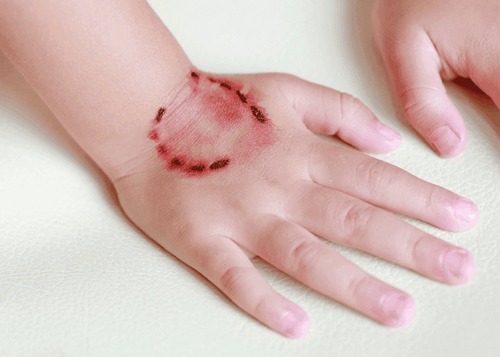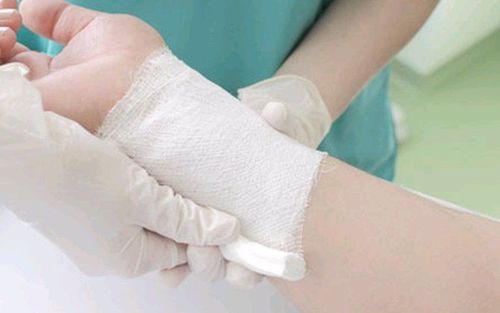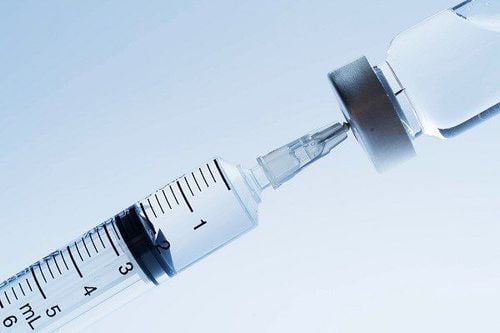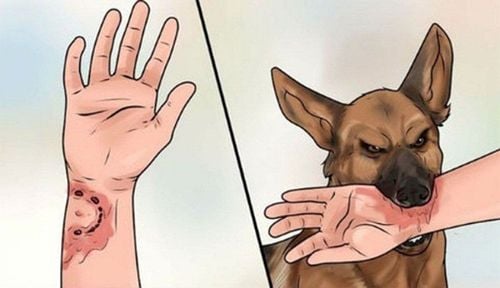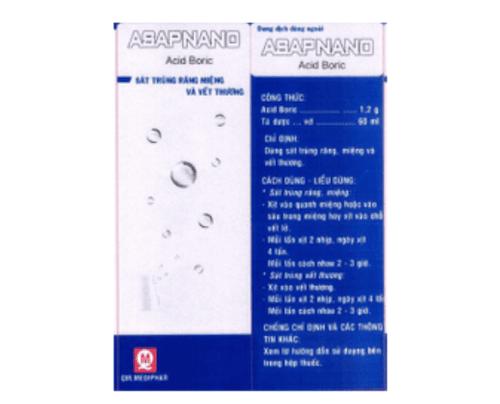This is an automatically translated article.
When a dog / cat scratches or bites many people, it is quite subjective when only cleaning the wound is done. However, in a few cases of dog/cat injury, it is necessary to get first aid for the wound to avoid infection and future health effects.
1. First aid for dog/cat bites
Care for a small animal bite wound should depend on the severity of the bite:
For non-tear wounds: recommended
Wash the wound thoroughly with soap and water. Antibiotics (in the form of creams or ointments) can be applied to the wound for prevention. For wounds that cause skin tears:
Wash the wound thoroughly with soap and water, gently press on the wound to let less blood flow, help remove less germs. Apply antibiotic to the wound Cover the bite with a sterile bandage. For wounds that cause bleeding
Place a gauze pad on the wound and gently press down to stop the bleeding. Apply antibiotic to the wound Cover the bite with a sterile bandage. All wounds caused by dog and cat bites should be monitored for signs of infection (swelling, heat, redness, painful touch...) until completely healed.
2. When to see a doctor if bitten by a dog or cat?
In addition to providing temporary home first aid for a cat bite, you also need to see a doctor in the following cases:
The dog that bit you is not sure if you have been vaccinated against rabies or has an erratic expression that seems sick. The wound does not stop bleeding or causes great pain. Deep wound that exposes bone, tendon or muscle damage. Wound showing signs of infection (redness, redness, heat, oozing or pus...) leaking pus or fluid Also seek medical attention if you:
In the past 10 years you have not had a curd planks or for 5 years in the case of a deep or dirty bite. You have fever, fatigue, confusion or fainting
3. Actively vaccinate against rabies
Rabies is a potentially fatal, but completely preventable condition with immediate appropriate medical intervention.
Situations that need rabies vaccination:
Dog bites show signs of rabies, such as erratic behavior or foaming at the mouth, you should get rabies vaccine. Even in that case, you or your doctor are concerned about the possibility that you could get rabies from a dog bite. Rabies vaccine: Depending on the type of vaccine, there are different injection regimens. At Vinmec Hospital, we are using the rabies vaccine Verorab (0.5mL/dose) according to the Essen regimen.
Subjects who have not been vaccinated against prophylaxis: inject 5 doses of Verorab (0.5ml/dose) on days 0, 3, 7, 14, 28. For cases of level III exposure, it is necessary to combine rabies Immunoglobulin injections. Subjects who have received prophylactic vaccination in the last 5 years: inject 02 doses on days 0 and 3. Subjects who have received prophylactic vaccination irregularly or over 5 years: inject 5 doses on days 0, 3, 7, 14, 28 and 5 years old. Immunoglobulin can be injected. Hopefully, the above sharing will help you gain more knowledge about how to give first aid to a dog/cat bite as well as to be proactive in vaccination for the best prevention.
Please dial HOTLINE for more information or register for an appointment HERE. Download MyVinmec app to make appointments faster and to manage your bookings easily.




